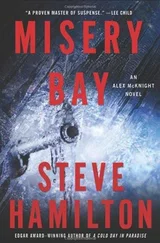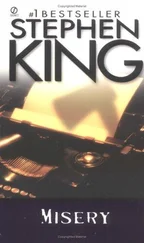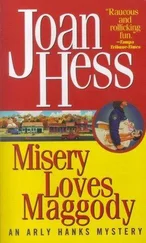Сэмуэль Шэм - Mount Misery
Здесь есть возможность читать онлайн «Сэмуэль Шэм - Mount Misery» весь текст электронной книги совершенно бесплатно (целиком полную версию без сокращений). В некоторых случаях можно слушать аудио, скачать через торрент в формате fb2 и присутствует краткое содержание. Жанр: Проза, на английском языке. Описание произведения, (предисловие) а так же отзывы посетителей доступны на портале библиотеки ЛибКат.
- Название:Mount Misery
- Автор:
- Жанр:
- Год:неизвестен
- ISBN:нет данных
- Рейтинг книги:4 / 5. Голосов: 1
-
Избранное:Добавить в избранное
- Отзывы:
-
Ваша оценка:
- 80
- 1
- 2
- 3
- 4
- 5
Mount Misery: краткое содержание, описание и аннотация
Предлагаем к чтению аннотацию, описание, краткое содержание или предисловие (зависит от того, что написал сам автор книги «Mount Misery»). Если вы не нашли необходимую информацию о книге — напишите в комментариях, мы постараемся отыскать её.
Mount Misery — читать онлайн бесплатно полную книгу (весь текст) целиком
Ниже представлен текст книги, разбитый по страницам. Система сохранения места последней прочитанной страницы, позволяет с удобством читать онлайн бесплатно книгу «Mount Misery», без необходимости каждый раз заново искать на чём Вы остановились. Поставьте закладку, и сможете в любой момент перейти на страницу, на которой закончили чтение.
Интервал:
Закладка:
I shivered. It was as if I'd been slipped a drug cocktail, mostly horror, but with a twist of delight. Horror at what I'd seen, but delight at how easy my rotation with the drug boys could be. As a doctor, I knew how to use drugs, how easy it was even to throw the right drug at a problem, let alone the wrong one. Using drugs in psychiatry was easier than using
drugs in medicine, where you had real effects to measure- blood pressure, cancer cells in bone marrow, heartbeat. In psychiatry there was nothing much to measure with certainty, so you didn't really know what you were treating, and couldn't know if the treatment worked. All year long I'd prescribed drugs for my really depressed or psychotic or manic patients, often with good results. There were only about six kinds of drags that helped psychiatry patients without hurting them. Drag therapy in psychiatry was mostly a no-brainer. The West would be a rest.
Despite all the death on my mind, just then the rain was a spring rain, soft and promising.
But then I heard the sorry wail of an ambulance approaching. It came in fast and stopped nearby, sliding off the gravel onto the grass.
The doors popped open. White-clad men got out, the last Dr. Errol Cabot.
They started hustling a stretcher out, one man holding an IV bottle high like on a TV show. Unlike on TV, the IV tube snagged on something, and someone shouted "Stop, you asshole, stop!" The stretcher stopped hi its movement out, and the head slid off the edge, tipping down, jaw up like Oly Joe Olaf's on that couch. Fearing the body would slide off and plunge onto the gravel, I ran to it and clutched it. I saw the ghost of a face I knew.
"Lily Putnam?"
"You know her?" Errol asked.
"Her husband was my patient."
"Oh yeah, the suicide, okay."
Lily seemed hardly to be breathing; her face looked like stone.
"Hey, retards!" Errol was screaming at the flustered medi-techs. "Get the lead out! I'm late!"
"She looks horrible!" I said. "What happened?"
"She's suicidal. She's an involuntary admission. I pink-papered her."
"Did she make a suicide attempt?"
"Not yet. Dr. Schlomo Dove said she was about to. He called us, and signed a ten-day paper, committing her to us."
"Schlomo, an analyst, signed her in for drag treatment?"
"Which is what she needed all along. The gal's endoge-nously depressed. Needs meds. Live better pharmaceutically."
"She looks terrible."
"Yeah and soon she'll feel wonderful and be better. I'm running in drugs now. IV, Placedon and Zephyrill. Principle of synergism. Two drugs better than one, three better than two, and so forth. Magic bullets."
"But she's totally zonked out."
"Better than being totally dead. Okay, men, ready? Move 'er out."
I watched them wrassle the stony body up the granite stairs into the West. My heart turned sharply on its spindle, fruit pecked at by crows.
My father's dead.
His face in his coffin, compared to bis face in his life, looked better. Calmer, yes. He looked more alive, dead. All these deaths. I had a hit of pain that took my breath away.
I hesitated to breathe in again, for it seemed that any real breath in would break my heart.
Fifteen
LILY, THE NEXT day, was still too drugged up to talk to me.
In her chart was a brief note written by Dr. Schlomo Dove saying that ever since the suicide of her husband Cherokee, she herself had been threatening to commit suicide. Thus when she refused hospitalization, he had enlisted Dr. Errol Cabot to go to her home with an ambulance and a ten-day paper to commit her involuntarily to Mount Misery.
Dr. Errol Cabot had diagnosed her as "296.34, Major Depressive Disorder, Recurrent, with Psychotic Features which are Mood-incongruent." He noted that she met seven of the eight criteria, including depressed mood, insomnia and hyper-somnia, decrease in sex drive, feelings of worthlessness or excessive or inappropriate guilt, psychomotor agitation and retardation, diminished ability to think and concentrate, and recurrent thoughts of death. The one she did not meet was weight loss when not dieting or weight gain, which I noted was the only symptom you could actually measure on a real scale.
To me, these symptoms were appropriate. The woman's husband had just blasted his brains all over a bird sanctuary. She'd just learned that he'd been having an affair, and maybe killed himself because he thought she was. Who wouldn't think of suicide, given all that? Yet she had never made a suicide gesture or attempt. Something didn't fit.
Under "Treatment," Errol had inserted into the chart a Xerox copy of his standardized drug protocol, or "algorithm." I was to learn that he inserted the same protocol into every chart, since he used it on every patient. The protocol was a diagrammed drug flowchart decision tree, developed by NIMH and IPAP (International Psychopharm Algorithm
Project), which looked, to my eyes, remarkably similar to the flowchart I had seen on Toshiba where the computer led you out onto thinner and thinner branches until you were out on a limb alone with the correct DSM diagnosis, or the flowchart for Misery itself, where the pathetic Nash and cute Jennifer were enboxed and dangling by a thread somewhere below Chief Lloyal von Nott, making the hospital seem like nothing so much as a Calder mobile made up of real live human beings in cages. And are there flowcharts of every institution, I wondered, and, in the Oval Office, a Rowchart for America?
Errol's chart showed the flow of a total of thirty-four drugs to be used, alone or in cocktails, one after the other, flowing into each patient's body until something worked, or didn't.
I was soon to see just how simple this treatment was. In addition to Placedon and Zephyrill, Errol and Win would give each patient drugs that were either antipsychotic, anti-anxiety, antidepression, or anti-the-side-effects-of-the-other-drugs drugs. If one drug failed, they'd move on to another, or add another on. Almost every patient ended up on a six-drug cocktail. Since the six drugs had to be given on different schedules-from once a day to five a day-there was always a nurse in the Dutch door handing out drugs. She would check the mouth to make sure the pill hadn't been tongued, and then say, "This'll make you better."
What if, by the end of the six-drug bingo up to a grand total of the thirty-four drugs the patient was not better? There, in the lower-left-hand corner of the protocol, in a small box in print you needed a magnifier to read, was:
Discharge to social worker, for Placebo Talk Therapy.
Taped to the cover of Lily Putnam's chart was a handwritten sign: NARC.
"Narcotics?" I asked Errol as he raced out the door to shock people.
"Not A Resident Case. Stay the fuck away, Frank."
"My name is Roy."
"Learn the name of one more resident," he said, "you forget the name of one more drug. Stay away."
"Why? Why can't I see her?"
"See? What the fuck is this, a residency in ophthalmology? Go away."
"What about the other patients? You mind if I go see them?"
"Why?"
'To listen to their stories, to try to understand them."
"Oh Jesus." He nodded at Win. "He wants to understand 'em. To listen."
"OH JESUS!" Win shouted.
"These are psychotics. These brains are neurochemical theme parks. But hey, you wanna sit there and listen to 'em talk bubble bath? Be my guest."
I TRIED TO talk with the patients. Someone had to. It wasn't easy. Either they were too crazy-hot to talk, or, doused with drugs, too cool.
Lily Putnam had been hit hard by Prozac and Ritalin and Placedon and Zephyrill, and she lay in her bed in her private room, not exactly sleeping but not exactly awake. She rose from the horizontal only to go to the bathroom and to drink liquids and take drugs. When I introduced myself, while there was a flicker of recognition, it quickly slid away under a molecular coverlet, like an ember underneath ash. No chance of suicide in Lily on drugs, no way. Nor of anything much else.
Читать дальшеИнтервал:
Закладка:
Похожие книги на «Mount Misery»
Представляем Вашему вниманию похожие книги на «Mount Misery» списком для выбора. Мы отобрали схожую по названию и смыслу литературу в надежде предоставить читателям больше вариантов отыскать новые, интересные, ещё непрочитанные произведения.
Обсуждение, отзывы о книге «Mount Misery» и просто собственные мнения читателей. Оставьте ваши комментарии, напишите, что Вы думаете о произведении, его смысле или главных героях. Укажите что конкретно понравилось, а что нет, и почему Вы так считаете.










